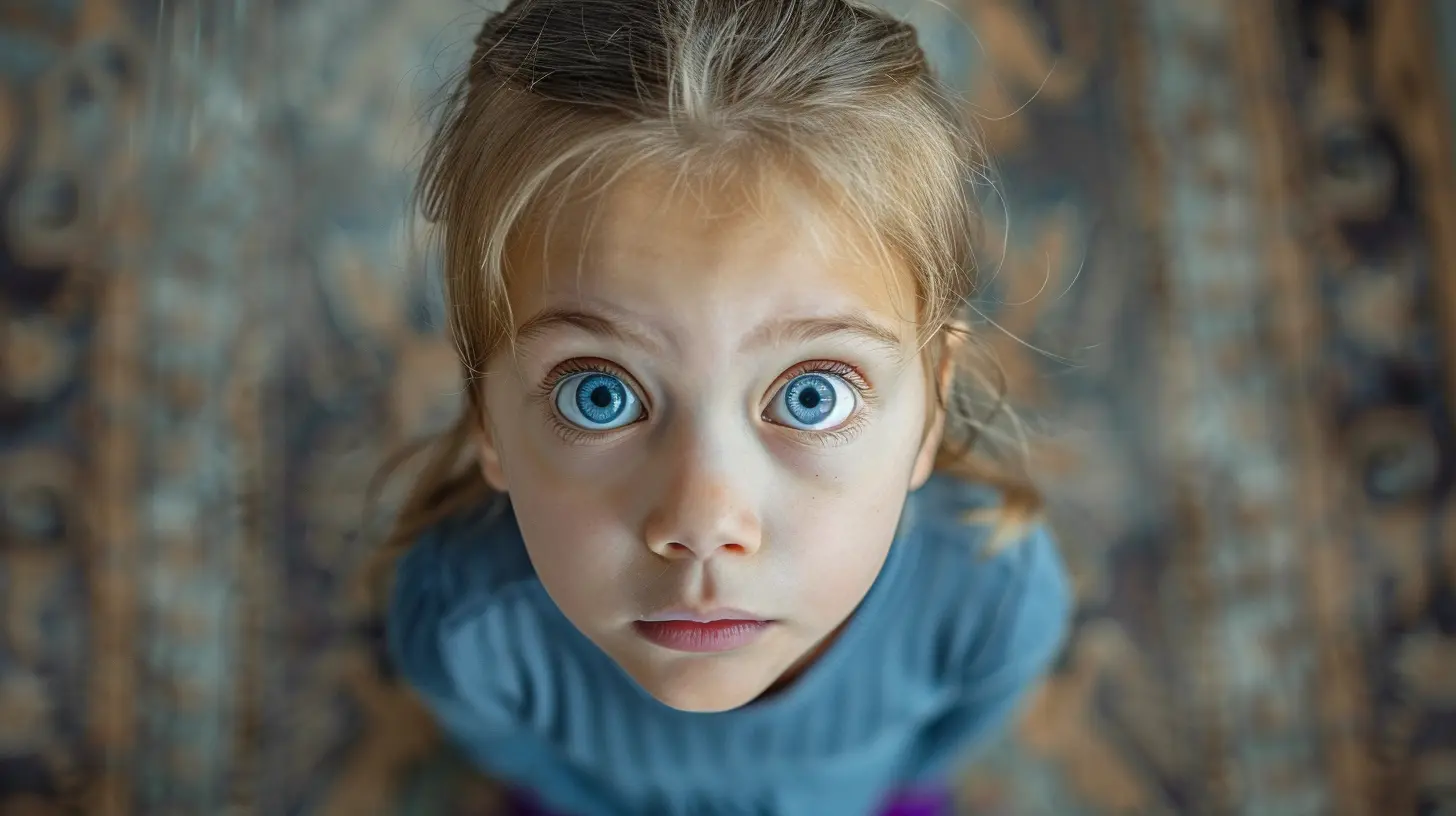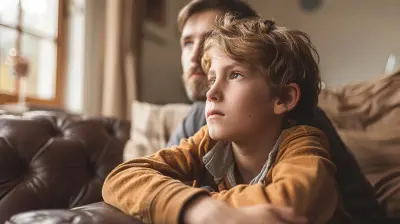Managing Childhood Fears Without Reinforcing Them
16 June 2025
Childhood fears are as common as scraped knees and bedtime stories. Every child, at some point, faces something that sends their imagination spiraling into overdrive. Whether it’s the monster under the bed, the dark, or even a barking dog, these fears can feel very real to them. As parents, it’s our responsibility to guide them through these emotions—without accidentally making things worse. Sounds tricky, right? Don’t worry; we’ll tackle this one step at a time.
Childhood is a rollercoaster of emotions, and fear is just one of the inevitable twists and turns. But how do we help them work through it? How can we validate their feelings without reinforcing the very thing they’re afraid of? Let’s break it down.
Why Childhood Fears Are Perfectly Normal
First off, let’s get one thing straight: fears are totally normal. In fact, they’re a part of how children learn about the world. Psychologists say fears are actually designed to keep us safe. Think about it—if your child didn’t feel a teensy bit afraid of a busy road, they might dart out without a second thought. Fear is the brain’s way of saying, “Hey, be careful!”But while some fears are protective, others can spiral into irrational territory. That’s where we come in. Our job as parents isn’t to eliminate every fear but to equip our kids with the tools to face them head-on. When approached correctly, childhood fears present a golden opportunity for growth.
Common Childhood Fears by Age
Before we dive into handling fear, it helps to know what’s developmentally normal. Children experience different fears as they grow:- Infants and Toddlers (0-3 years): Loud noises, separation from parents, strangers.
- Preschoolers (3-5 years): The dark, monsters, imaginary creatures, being alone.
- School-Aged Kids (6-12 years): Failure, criticism, natural disasters, injury, death.
- Teenagers (13+ years): Social rejection, academic failure, the future.
Does your child’s fear fit neatly into one of these categories? If so, take a deep breath. You’re not alone, and neither are they.
Why “Fixing” Fear Doesn’t Work
Here’s the thing about fear: trying to “fix it” often backfires. Imagine if you were afraid of spiders, and someone showed up with ten tarantulas to prove they’re harmless. Would you feel better? Probably not. Yet, it’s tempting to “logic” kids out of their fears by saying things like, “There’s nothing to be scared of.”The problem is, dismissing fear feels invalidating. It’s like telling them, “Your feelings don’t matter,” even if that’s not the intention. Kids need to feel heard and understood before they can move past their fears.
How to Manage Childhood Fears Without Reinforcing Them
1. Validate Their Feelings
The first step is to acknowledge their fear. Saying, “I can see why that feels scary to you,” works wonders. It shows your child you take them seriously. Avoid saying, “That’s silly,” or “You’re too old to be scared of that.” These responses can make them feel ashamed or even dig their heels in deeper. Instead, let them know it’s okay to feel afraid.Think of it this way: validating a fear doesn’t mean agreeing with it. You’re not saying, “Yep, there’s definitely a monster in the closet.” You’re saying, “I understand why you’d think that.” Big difference, right?
2. Ask Open-Ended Questions
Sometimes, just talking through a fear helps diffuse it. Ask questions like:- “What makes you feel scared about this?”
- “What do you think could happen?”
- “Has this ever happened before?”
The goal is to help them unpack what’s really bothering them. Often, fears are tangled up in misunderstanding. Once they explain it in their own words, it might not seem so overwhelming.
3. Avoid “Overprotecting”
Of course, your gut instinct might be to shield them from anything uncomfortable. But here’s the catch: overprotecting can backfire. For instance, if your child is scared of dogs, avoiding every dog forever doesn’t teach them coping skills. Instead, it reinforces the idea that dogs are dangerous.The key here? Gradual exposure. Ease them into situations that feel manageable. For the dog example, maybe start by looking at pictures of friendly dogs, then watching one from a safe distance. Baby steps are your best friend.
4. Teach Coping Skills
Kids need tools to help calm themselves when fear strikes. Here are a few simple techniques to teach them:- Deep Breathing: Encourage them to take slow, deep breaths. One way to make it fun is to use “bubble breathing.” Pretend they’re blowing a giant bubble—slow and steady does the trick.
- Positive Self-Talk: Help them reframe the fear. For example, “I’m strong and can handle this,” works better than, “I’m scared!”
- Visualization: Encourage them to imagine a safe or happy place. This can transport their mind away from the fear for a moment.
5. Model Bravery
Kids look to us for clues on how to handle tough situations. If you’re visibly anxious about their fear, they’ll pick up on it. Instead, show them how to face fears with confidence. Let’s say they’re scared of thunderstorms. Rather than panicking, you could say, “I hear the thunder too! It’s loud, but we’re safe inside.”This doesn’t mean faking fearlessness. If you’re scared of something, it’s okay to admit it. Just show them how you work through it. Sharing your thought process (e.g., “It’s okay to feel scared, but I remind myself I’m safe”) can be incredibly powerful.
6. Make It Fun
Sometimes, a little creativity goes a long way. If your child is scared of the dark, turn it into a game by letting them play with shadow puppets. If they’re afraid of monsters, grab a flashlight and go on a “monster hunt” together. When you inject humor and play, scary things lose their power.7. Provide Accurate Information
Kids’ fears often stem from misconceptions. If your child is afraid of storms, explain how they work in age-appropriate language. Knowledge is power, and understanding the “why” can make fears less intimidating. Just be careful not to overwhelm them with too much info.What If The Fear Persists?
Most childhood fears are fleeting, but what if your child remains stuck? It might be time to consult a professional if:- The fear interferes with their daily life (e.g., they refuse to sleep alone or go outside).
- They seem overly anxious about many things.
- Their fear isn’t improving, even with support.
Child therapists can use techniques like cognitive-behavioral therapy (CBT) to help kids reframe their thinking. There’s no shame in asking for help—it’s just another tool in the parenting toolbox.
The Trick Is Balance
At the end of the day, managing childhood fears is all about balance. You want to acknowledge their feelings without accidentally feeding the fear. It’s a delicate dance, but with patience and practice, you’ve got this.Think of it like teaching them to ride a bike. At first, you’re holding on to the back, guiding them. Eventually, you let go, and they learn to balance on their own. Helping them manage fear is kind of the same—you’re teaching them how to steady themselves when life feels wobbly.
Final Thoughts
Let’s be honest: parenting isn’t always easy, and helping a child navigate their fears is no exception. But remember, fears are just a part of the growing-up process. By showing empathy, teaching coping skills, and being a steady source of support, you’re equipping your child with tools that will serve them for life. And hey, don’t forget to give yourself some credit too—you’re doing an amazing job.all images in this post were generated using AI tools
Category:
Dealing With FearsAuthor:

Steven McLain
Discussion
rate this article
3 comments
Bailey McClary
Great insights! Balancing empathy with gentle guidance truly helps children navigate their fears.
June 22, 2025 at 3:52 AM

Steven McLain
Thank you! I'm glad you found the insights valuable. Balancing empathy and guidance is indeed crucial in helping children manage their fears effectively.
Zephyrian Roth
This article provides valuable insights on addressing childhood fears with empathy and understanding. By validating emotions while gently encouraging bravery, parents can help children navigate their anxieties without inadvertently reinforcing them. Practical strategies make this a must-read for fearful kids.
June 20, 2025 at 4:03 AM

Steven McLain
Thank you for your thoughtful comment! I'm glad you found the insights and strategies helpful for addressing childhood fears with empathy.
Julia Kelly
Absolutely! Navigating childhood fears can be challenging, but remember, your support and understanding can empower your child. By fostering open communication and encouraging resilience, you’re helping them build confidence and face challenges head-on. Together, you can turn fears into opportunities for growth!
June 17, 2025 at 2:43 PM

Steven McLain
Thank you for your insightful comment! Supporting children through their fears is crucial for their growth and resilience. Open communication truly makes a difference.



